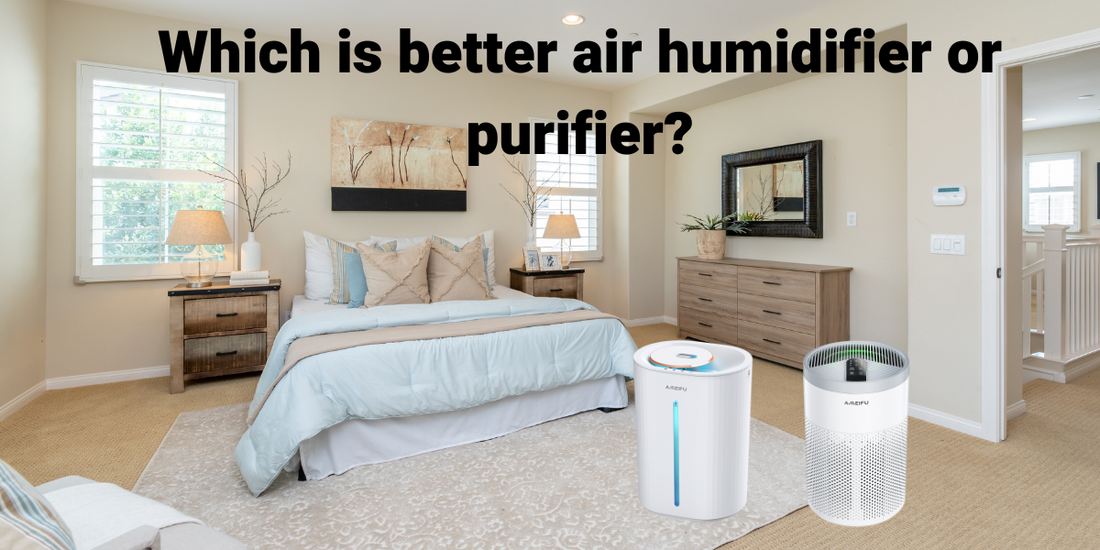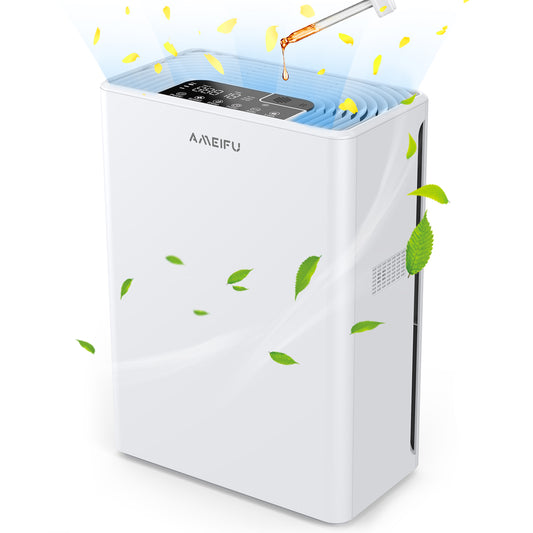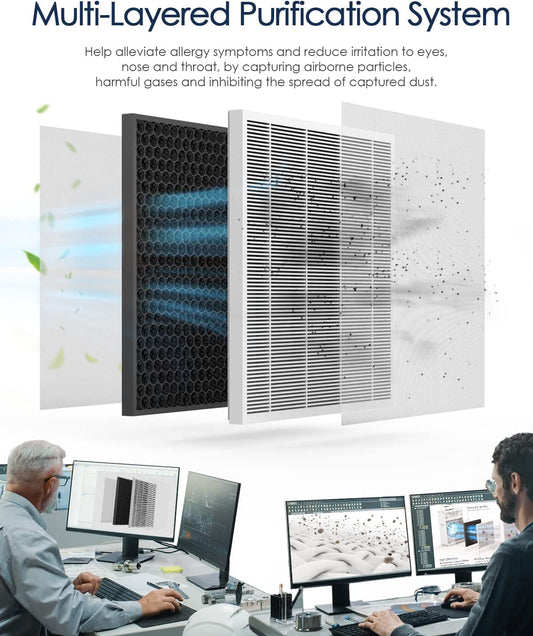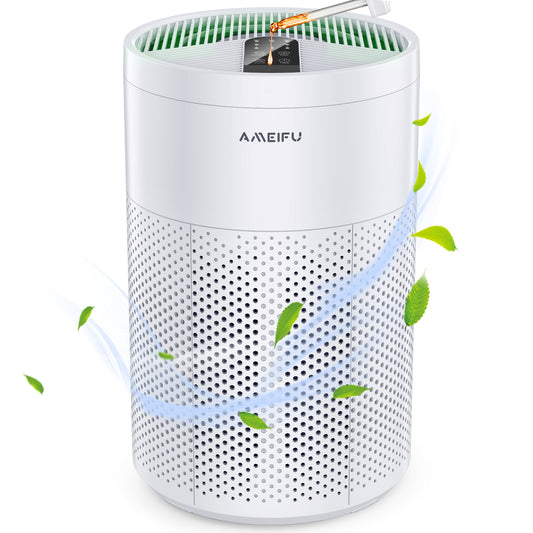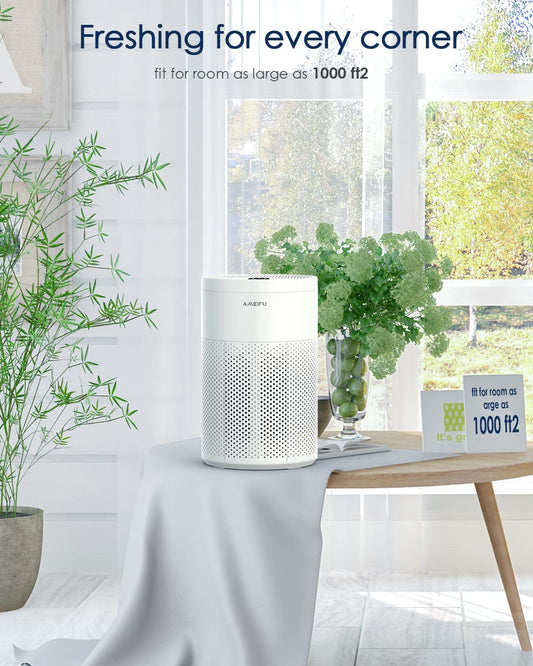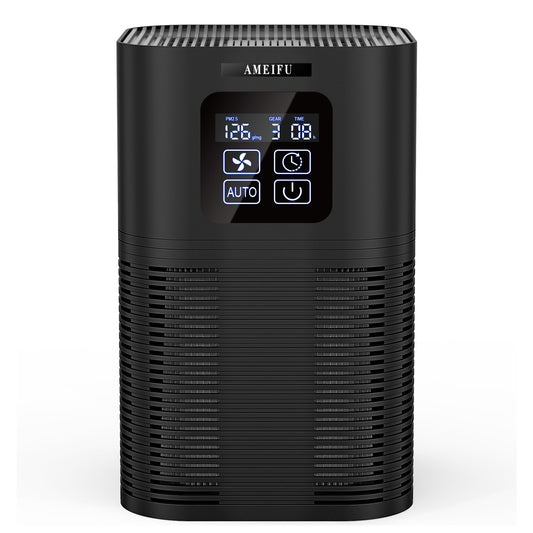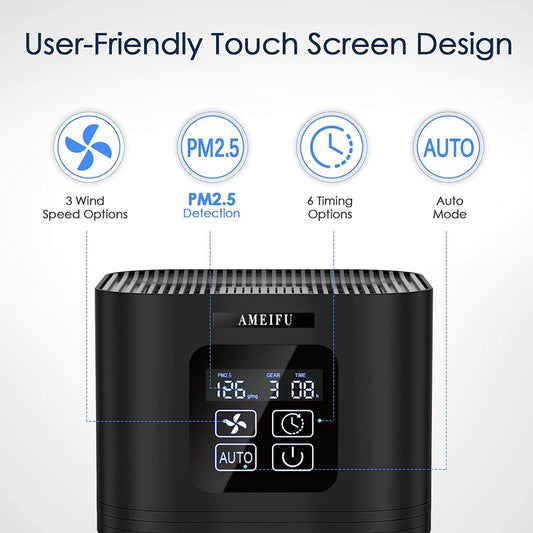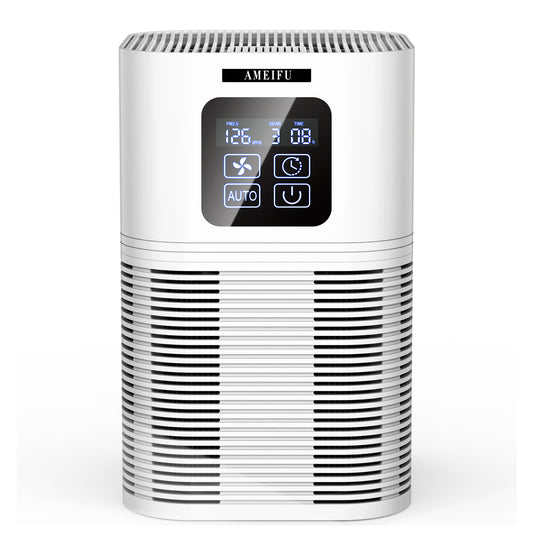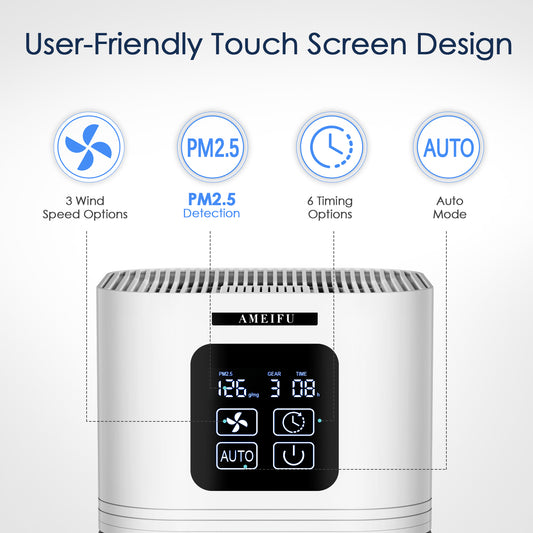Maintaining a healthy indoor environment is crucial for our well-being, and two common devices used to improve indoor air quality are air humidifiers and air purifiers. While both serve different purposes, it's important to understand their benefits and determine which one is better suited for your specific needs. In this article, we will compare air humidifiers and air purifiers, examining their functions, benefits, and considerations to help you make an informed decision about which device is better for your situation.
Understanding Air Humidifiers
Air humidifiers are devices designed to increase moisture levels in the air. They add moisture to dry indoor environments, which can be particularly beneficial during the winter months or in arid climates. Here are some key points to consider about air humidifiers:
Function
Air humidifiers work by emitting water vapor into the air, increasing the humidity level. This helps alleviate symptoms of dry skin, chapped lips, dry nasal passages, and static electricity in the air.
Benefits
- Improved Comfort: Increasing humidity can help alleviate discomfort associated with dry air, such as dry throat, itchy eyes, and irritated respiratory passages.
- Respiratory Health: Adequate humidity levels can help soothe respiratory conditions like asthma, allergies, and sinus congestion.
- Moisturized Skin: Higher humidity levels can prevent skin dryness, keeping it hydrated and reducing issues like dryness and flakiness.
- Preserving Wooden Furniture and Instruments: Maintaining optimal humidity levels can prevent wood from drying out and cracking, benefiting wooden furniture, floors, and musical instruments.
Considerations
- Maintenance: Proper maintenance, including regular cleaning and disinfection, is essential to prevent bacterial growth and ensure the device operates effectively.
- Monitoring Humidity Levels: It's important to monitor humidity levels using a hygrometer to avoid excessive moisture, which can create an environment conducive to mold and bacteria growth.
Understanding Air Purifiers
Air purifiers, on the other hand, are devices designed to remove contaminants from the air, improving overall air quality. They are particularly useful in reducing allergens, pollutants, and odors. Consider the following points about air purifiers:
Function
Air purifiers work by drawing in air and passing it through various filters or technologies to capture and eliminate airborne particles such as dust, pollen, pet dander, mold spores, bacteria, and volatile organic compounds (VOCs).
Benefits
- Allergen Reduction: Air purifiers can reduce common allergens in the air, helping to alleviate allergy symptoms and improve overall respiratory health.
- Odor and Smoke Elimination: Air purifiers equipped with activated carbon filters or technologies can effectively eliminate odors and smoke particles, providing a fresher and cleaner indoor environment.
- Asthma Relief: By removing airborne triggers such as dust mites, pet dander, and pollen, air purifiers can help reduce asthma symptoms and improve breathing for asthma sufferers.
- Improved Air Quality: Air purifiers can enhance the overall air quality, making it suitable for individuals with respiratory conditions, sensitivities, or those concerned about indoor pollutants.
Considerations
- Filter Maintenance: Regular filter maintenance, including cleaning or replacement, is necessary to maintain the effectiveness of air purifiers in removing airborne particles.
- Coverage Area: Consider the coverage area of the air purifier to ensure it can adequately purify the size of the room or space where it will be used.
Determining the Best Choice for Your Needs
When deciding between an air humidifier and an air purifier, it's essential to consider your specific needs and circumstances. Here are some factors to consider:
Purpose
- Dry Air Relief: If dry air is the main concern, such as during the winter or in arid climates, an air humidifier is the better choice. It helps increase moisture levels and alleviate symptoms associated with dry air, such as dry skin, chapped lips, and respiratory discomfort.
- Allergen and Pollutant Reduction: If you are primarily concerned about reducing allergens, pollutants, and odors in the air, an air purifier is the preferred option. It targets airborne particles and helps improve overall air quality, benefiting individuals with allergies, asthma, or sensitivities to indoor pollutants.
Specific Health Concerns
Consider any specific health concerns you or your family members may have. If allergies, asthma, or respiratory conditions are prominent, an air purifier can provide targeted relief by removing allergens and irritants from the air. However, if dry air exacerbates symptoms or causes discomfort, an air humidifier may be more beneficial.
Climate and Environmental Factors
Evaluate the climate and environmental factors in your area. If you live in a dry climate or experience low humidity levels, an air humidifier can help maintain comfortable moisture levels in your home. Conversely, if you reside in an area with high pollution levels, an air purifier can help mitigate the effects of outdoor pollutants and improve indoor air quality.
Combination Use
In some cases, using both an air humidifier and an air purifier can provide comprehensive benefits. For example, during the winter months, when indoor heating can lead to dry air, using an air humidifier to increase moisture levels and an air purifier to remove allergens and pollutants can create a healthier and more comfortable indoor environment.
Conclusion
Determining whether an air humidifier or an air purifier is better for your needs depends on various factors, including your specific concerns, health conditions, climate, and environmental factors. Air humidifiers are ideal for increasing moisture levels and alleviating dry air symptoms, while air purifiers excel at reducing allergens, pollutants, and odors in the air. Consider your priorities, evaluate the benefits of each device, and choose the option that best addresses your unique requirements. In some cases, using a combination of both devices may provide the most comprehensive solution for improving indoor air quality and creating a healthier living environment.

